Fruit and Jelly bird feeders are versatile feeders that attract birds that normally feed on fruit and nectar. Keep in mind that since the fruit can spoil quickly, you’ll need to check the feeders often and remove any uneaten pieces. Also, food in these feeders may attract some unwanted visitors like flies or ants. Here’s a breakdown of the characteristics and of these types of backyard bird feeders.

What is a fruit bird feeder?
Fruit (hanger) bird feeders are simple feeders consisting of a hook or hanger mechanism designed to hold fruit halves or slices. A fruit bird feeder can also be a shallow bowl holding the fruit.
How it Works
Fruits like oranges, apples, or melons are cut in half or slices and placed on the hanger or spiked prongs. Birds perch and peck at the exposed fruit flesh.
Description of the Feeder:
- Material: Fruit feeders come in a variety of materials including plastic, recycled plastic, and metal. Some decorative feeders may be made of wood.
- Design: There are two main types of fruit feeders: hangers and bowls.
Fruit hangers are typically cylindrical with a hook for hanging and multiple skewers or cups for impaling fruit slices or halves.
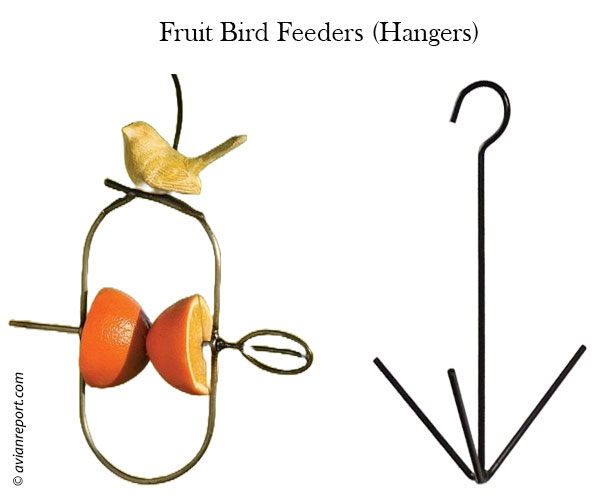
Fruit bowls are open bowls designed to hold cut-up fruit or whole fruits. Some bowl feeders have a domed roof to protect the fruit from the elements. Both hanger and bowl feeders may have drainage holes to prevent water accumulation and spoilage.
Features: Some fruit feeders have perches around the base or integrated into the design to allow birds a place to land while feeding.
Size and Variety: Fruit feeders come in a variety of sizes, accommodating different fruit types and quantities. They range in size from small feeders suitable for holding oranges or apples to larger bowls that can hold multiple fruits.
Related:
Hummingbird Nectar Feeders
Window Bird Feeders
Suet Bird Feeders
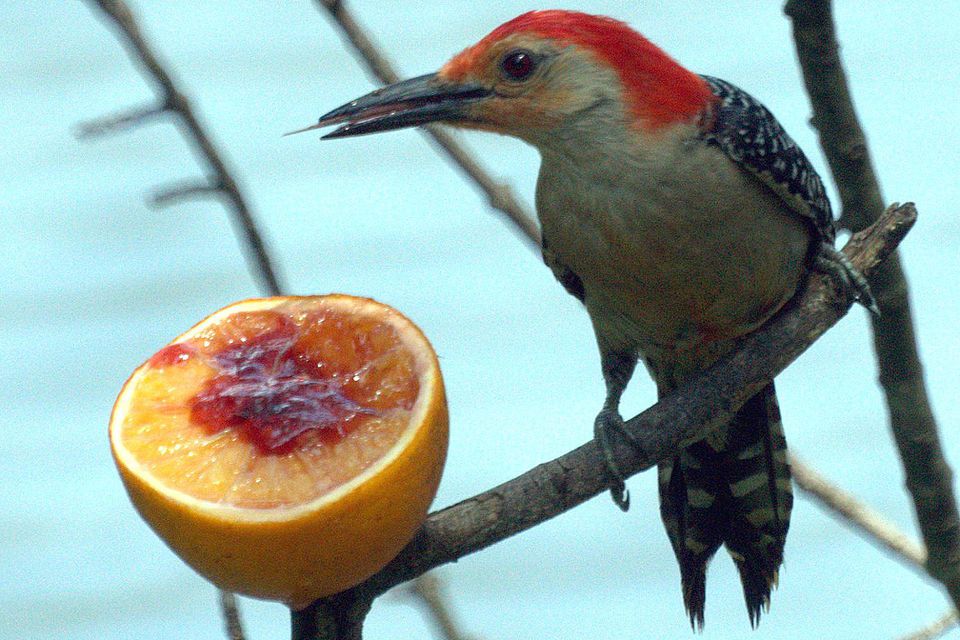
Types of fruit:
Fruit feeders are designed for offering a variety of fresh fruits that are a natural food source for many birds. Some popular fruits to offer include:
- Oranges
- Apples
- Grapes
- Bananas
- Melons
Fruit Capacity:
The amount of fruit offered depends on the feeder size and the type of fruit being used. Generally, feeders can hold one or two halves or multiple skewers of fruit slices.
Refilling Recommendation:
Ripe fruits can spoil quickly, so it’s recommended to monitor feeders daily and remove uneaten fruit pieces before they spoil.
Refill the feeder with fresh fruit as needed. In hot weather, refilling in the morning is recommended to avoid attracting unwanted pests.
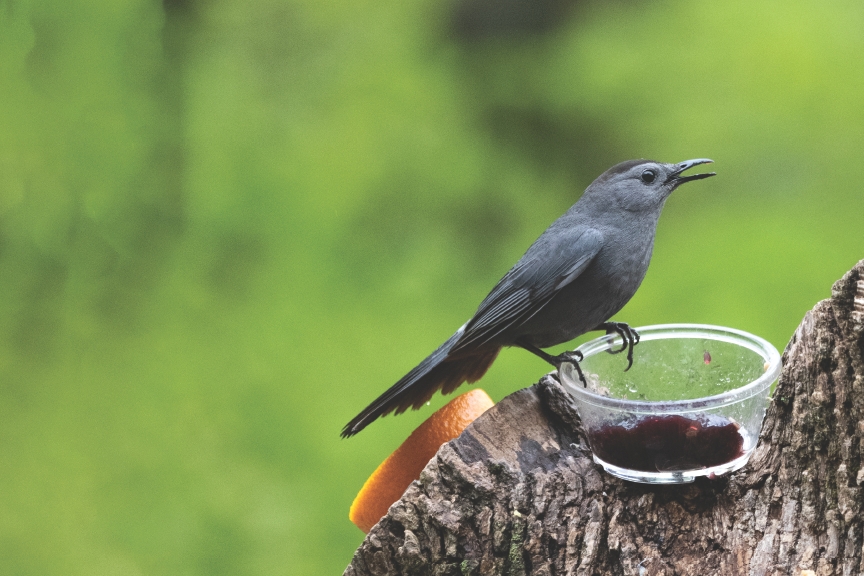
Birds Attracted:
These feeders are not ideal for all birds. They primarily attract birds that regularly feed on fruit, berries, and nectar. Birds that feed on insects and seeds, like chickadees and finches, are not likely to visit these feeders.
Fruit and jelly feeders attract an specific variety of birds that enjoy a sweet treat, including:
- Orioles
- Robins & Thrushes
- Catbirds
- Tanagers
- Mockingbirds
- Woodpeckers
- Jays
Advantages:
- Attracts a variety of colorful birds that may not visit other feeder types.
- Provides a natural food source that many birds enjoy.
- Relatively simple and easy to maintain.
- Can be visually appealing depending on the feeder design.
Disadvantages:
- May attract mess-making birds like orioles who can be aggressive at feeders.
- Fruit can spoil quickly, requiring frequent monitoring and cleaning.
- Can attract unwanted pests like fruit flies, ants. and wasps.
- Open feeders may not be suitable for areas with wet or snowy weather.
Related:
Globe Bird Feeders
Thistle Bird Feeders
Hopper or House Bird Feeders

Jelly bird Feeders:
What is a jelly bird feeder?
A jelly bird feeder is a small container, often with a bowl for holding jelly. It attracts birds that typically enjoy fruit and nectar. Jelly is placed inside the container, either in a simple open dish or a more elaborate design with feeding ports.
How does a jelly feeder work?
Jelly feeders come in two main styles: open feeders where the jelly is exposed on a hanger or platform, and caged feeders with small mesh openings that restrict access to birds of a certain size. In both styles, birds reach the jelly by sticking their beaks through the openings.
Combining Fruit and Jelly:
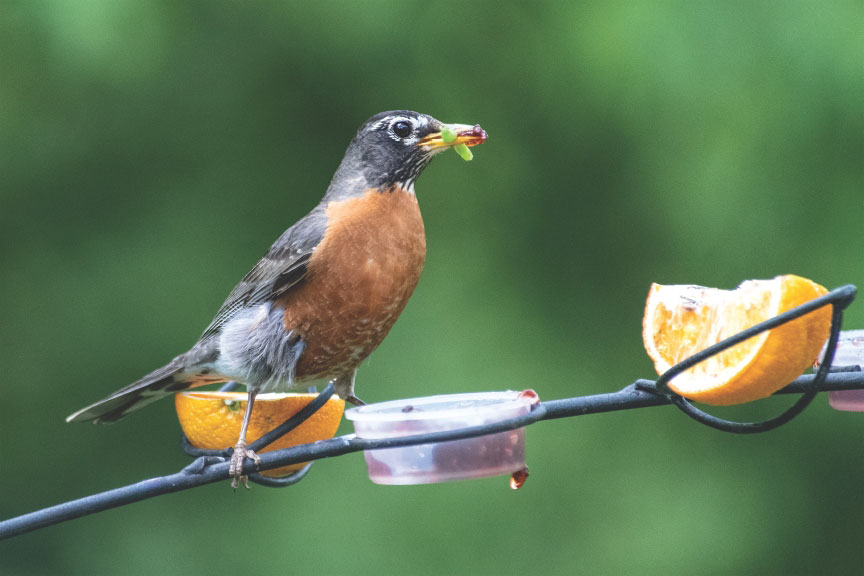
Some bird feeders have a bowl specifically designed to hold jelly, while a separate section with spikes or a tray allows for placing fruit slices or halves.
Jelly bowls (containers)
- Design: They can be an open jar or a container with feeding ports specifically designed for accessing jelly.
- Material: Similar to fruit feeders, these are often made of clear plastic for visibility or recycled plastic for durability.
- Features: Simple jar-like feeders sit on a flat surface. Some designs have a tray below to catch drips and make cleaning easier. Some feeders have built-in perches near the feeding ports.
- Size and Variety: Sizes vary, but most are small and suitable for hanging near windows or on shepherd’s hooks.
What is the best type of jelly to use in jelly bird feeders?
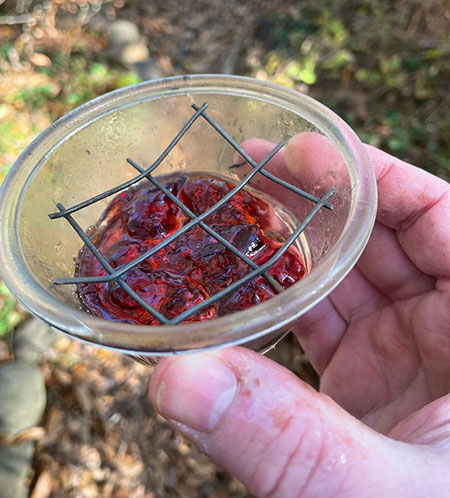
Regular grape jelly, as long as it has a reasonable sugar content and limited artificial ingredients, is a perfectly acceptable and widely used option for jelly bird feeders. Reasons include:
- Sweetness: Birds are attracted to the sugar content in jelly, and grape jelly provides a good balance of sweetness.
- Color: The bright red color of grape jelly is visually appealing to birds.
- Availability: It’s easy to find and affordable compared to specialty options.
Things to keep in mind:
- Sugar Content: While some sugar is okay, avoid using jams or jellies with high fructose corn syrup or excessive added sugars. Opt for varieties with a simple sugar content (sugar or cane sugar listed high on the ingredients list).
- Artificial Ingredients: Minimize artificial flavors, colors, or preservatives as they may not be healthy for birds.
Alternatives to Consider:
- Homemade Jelly: If you make your own jelly, ensure it uses natural ingredients and limit the sugar content.
- Jelly Made for Birds: Some specialty stores offer jellies specifically formulated for birds. These may contain additional vitamins or minerals but are typically more expensive.
Final thoughts about fruit and jelly bird feeders:
- Fruit and jelly for birds: Attract orioles, tanagers, catbirds, jays, and some woodpeckers with fruit and jelly.
- Feeder Design: There are multiple designs for fruit and jelly feeders. You can also combine both feeders in one. Look for feeders with separate compartments for jelly and fruit.
- Jelly Options: Regular grape jelly is a popular choice..
- Fruit Options: Offer oranges, apples, melons, or other fruits cut in half or slices.
- Cleaning and refilling are important: Regular cleaning and replacement of spoiled fruit are necessary to prevent spoilage and mold growth.
- Not for all birds: These feeders may not attract insect-eating birds like chickadees and finches.
Related:
Tube Bird Feeders
Tray (Platform) Bird Feeder
Author: